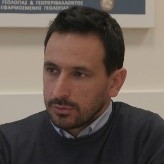Remote Sensing in Urban Natural Hazards Monitoring
A special issue of Remote Sensing (ISSN 2072-4292). This special issue belongs to the section "Urban Remote Sensing".
Deadline for manuscript submissions: 26 May 2024 | Viewed by 11588
Special Issue Editors
Interests: active tectonic; earthquake; natural hazards; geology; paleoenvironment; seismic hazards
Special Issues, Collections and Topics in MDPI journals
Interests: earth observation; GIS; agriculture; geomorphology; natural resources; disasters
Special Issues, Collections and Topics in MDPI journals
Interests: seismic hazard assessment; earthquake geology; remote sensing; structure from motion; tectonic geomorphology; earthquake catastrophe modeling; paleoseismology; UAV
Special Issues, Collections and Topics in MDPI journals
Interests: extreme events; flash flooding; flood mortality; risk perception; hydrogeomorphological disasters; landslides
Special Issues, Collections and Topics in MDPI journals
Special Issue Information
Dear Colleagues,
The uncontrollable expansion of urban areas has led to the constant growth of urban populations, resulting in increased exposure to numerous natural hazards. The natural disaster-related economic and human losses during the last century have been enormous. Enhancing the prevention efforts can lead to the reduction of losses both in terms of property and infrastructure losses and human losses. Especially in urban areas, there is an urgent need to increase prevention initiatives through constant monitoring and study of natural phenomena that can influence urban areas and their population.
Currently, advances in remote sensing techniques encompass state-of-the-art tools and applications, involving Geographic Information Systems (GIS), Unmanned Aerial Vehicles and Lidar (airborne and terrestrial) and have the potential to provide significant solutions in the field of natural hazard prevention. Advanced remote sensing offers a range of beneficial data to study natural disasters with higher spectral, temporal, and spatial resolution, as well as high accuracy and reliability information in a number of aspects included in natural risk management. This Special Issue aims to collect studies covering natural hazards management, prevention and understanding in urban areas. More specifically, the main goal of this Special Issue is monitoring phenomena and natural hazards that can influence urban areas, threaten their population and their infrastructures.
Topics may cover anything from the conventional assessment and estimation of geological, geoenvironmental and climate-related hazards to pandemic situations and health management issues. Hence, multiscale approaches or studies and interdisciplinary original research articles focused on natural hazards in urban environment monitoring are welcome. Articles may address, but are not limited, to the following topics:
- Remote sensing and urban floods;
- UAV, LiDAR in urban areas;
- UAV in geomorphological mapping;
- Remote sensing and GIS applications and urban population applications;
- Remote sensing and GIS applications in natural disasters in Urban areas;
- Remote sensing and GIS applications in pandemic situations.
Dr. Aggelos Pallikarakis
Dr. Emmanouil Psomiadis
Dr. Georgios Deligiannakis
Dr. Michalis Diakakis
Guest Editors
Manuscript Submission Information
Manuscripts should be submitted online at www.mdpi.com by registering and logging in to this website. Once you are registered, click here to go to the submission form. Manuscripts can be submitted until the deadline. All submissions that pass pre-check are peer-reviewed. Accepted papers will be published continuously in the journal (as soon as accepted) and will be listed together on the special issue website. Research articles, review articles as well as short communications are invited. For planned papers, a title and short abstract (about 100 words) can be sent to the Editorial Office for announcement on this website.
Submitted manuscripts should not have been published previously, nor be under consideration for publication elsewhere (except conference proceedings papers). All manuscripts are thoroughly refereed through a single-blind peer-review process. A guide for authors and other relevant information for submission of manuscripts is available on the Instructions for Authors page. Remote Sensing is an international peer-reviewed open access semimonthly journal published by MDPI.
Please visit the Instructions for Authors page before submitting a manuscript. The Article Processing Charge (APC) for publication in this open access journal is 2700 CHF (Swiss Francs). Submitted papers should be well formatted and use good English. Authors may use MDPI's English editing service prior to publication or during author revisions.
Keywords
- Suburban forest fires and erosion
- Pollution
- Urban climate changes
- Urban floods
- Earthquakes and active faults
- Liquefaction
- Pandemic situations







